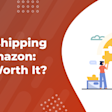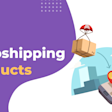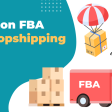
Reverse Dropshipping: A Profitable Alternative to Traditional Dropshipping
When starting a retail business, many sellers choose the dropshipping approach since it’s one of the easiest business methods to implement. This sourcing model usually includes shipping from China or local suppliers, which provide countless options if you plan to launch a dropshipping business.
However, reverse dropshipping involves a different approach. This method occurs when western countries supply products to Asian, African, or other less developed countries. This approach is quite unpopular, and many sellers trying to launch a business struggle to find sufficient information about this particular strategy.
In this article, we will share some useful information about reverse dropshipping and tips for making it work.
Table of contents
What is Reverse Dropshipping?
Reverse dropshipping is a business model in which high-quality products are sourced from countries that typically import goods, and then sold in regions that usually act as exporters. This approach contrasts with traditional dropshipping, which often involves sourcing inexpensive products from traditionally exporting countries to sell abroad in high-demand markets.
With reverse dropshipping, the focus is on bringing exclusive, premium-quality products into markets where consumers are increasingly interested in high-end imports, which provides a unique opportunity for differentiation and profit.
Reverse Dropshipping vs. Dropshipping
Below, you’ll find a visual comparison highlighting the key aspects of traditional vs. reverse dropshipping.
Product Sourcing:
Traditional Dropshipping: Inexpensive, mass-produced items, often sourced from Asian manufacturers
Reverse Dropshipping: Premium, high-quality products sourced from traditionally importing countries, like the U.S. and others in Europe
Target Market:
Traditional Dropshipping: Primarily North America, Europe, and other high-demand regions
Reverse Dropshipping: Markets with growing demand for quality imports, such as China, India, and the Middle East
As for business viability, traditional dropshipping often raises questions about long-term sustainability due to profit and quality challenges, while appeal for the reverse model has been growing, especially as demand for high-quality, exclusive imports increases in new markets.
And speaking of customer appeal, traditional dropshipping tends to attract budget-conscious customers looking for low-cost options. With reverse dropshipping, consumers are seeking unique, luxury, or innovative products, and are often willing to pay a premium for quality.
As you can see, both traditional and reverse dropshipping offer distinct paths, each with its own unique advantages and challenges. Ultimately, choosing the right model depends on your business goals, budget, and target audience.
How to Start a Reverse Dropshipping Business
There is actually almost no difference between the essential steps for how to start a regular dropshipping business and a reverse one. The only difference is that your operations take place on other websites that align with your expectations and needs. Here’s how.
1. Choosing Your Market
Choosing the right market for reverse dropshipping is crucial, as each region presents its own unique opportunities and regulations. Begin by identifying a target country. Ideally, look for regions with high demand for premium imports, but limited access to specific quality products.
For example, buyers in countries like China, India, and parts of the Middle East have a growing appetite for luxury items, skincare products, and high-quality electronics from Western markets. If you have local connections or insights into these regions, that knowledge can provide a competitive advantage.
Once you select a market, it’s time to research its specific legal requirements—many countries enforce strict guidelines with regard to product safety, labeling, and banned ingredients, particularly in categories like cosmetics, electronics, and food. For instance, the E.U. and Australia have detailed regulations on skincare ingredients, while countries like China have specific in-vivo testing requirements. Consulting with a local accountant or legal expert can help to ensure that you comply with these standards.
In some cases, trade agreements or partnerships (like Shopify’s collaboration with JD.com in China) can simplify your legal processes and reduce paperwork. If you choose to handle the paperwork yourself, consider working with a translator to help you navigate government forms and communications, and ensure full compliance as you enter a new market.
2. Product Research
For the first time, you can try to search for a product manually. Google some popular marketplaces in the country you’re planning to ship to, take a look at what kinds of items other sellers are offering there, and their prices. Conduct research as you normally would for any other regular retail business: search for products with a good quantity and quality of reviews, in different niches that interest you, to find potentially profitable products.
Also, visit the Amazon site for that country, if available, and find out which products sell well there. To do this, you may consider using special tools like the AMZScout Product Database. This tool is so useful for searching profitable products on Amazon. It enables you to:
Assess demand level: Examine the number of active sellers and product reviews to gauge how popular the market is. While higher numbers indicate high demand, aim for products with a manageable balance of interest and competition.
Estimate profitability: Look at monthly sales volume and estimated revenue to calculate potential profitability. Products with consistent sales and solid monthly revenue can indicate a viable choice for dropshipping.
Determine if the product is suitable for dropshipping: Look at the product’s score for reselling to assess its dropshipping potential. This score can help you identify items that are well-suited for reselling based on demand, profitability, and ease of logistics.
It’s up to you to decide which option is better for you. However, a multi-faceted approach is always better, as you can get deeper insights into what items are sold on different marketplaces. And special tools like the Product Database can share truly vital information and data so you can make an informed decision.
3. Platform Selection
Choose the platform where you want to sell your products. This could be a dedicated e-commerce website, a well-known marketplace like Amazon, or a social media storefront. Each platform has its own audience, so select one that aligns with your brand and product offerings. You also need to find out whether buyers are using the platform you’ve chosen, so look for these marketplaces on social media or online forums.
4. Finding a Supplier
Partner with reputable suppliers that offer high-quality products and reliable shipping. Focus on building strong relationships to ensure consistent quality and delivery. Check out suppliers from regions like the U.S., Europe, or Australia to maintain the premium product standard that reverse dropshipping demands.
5. Setting Up Listings, Website, or Social Media Store
Create a professional online presence that showcases your products effectively. Whether it’s through high-quality listings on an e-commerce platform, a dedicated website, or a social media store, be sure to invest time in crafting product descriptions and visuals that communicate the quality and exclusivity of your offerings.
6. Marketing and Advertising
Promote your business using targeted advertising strategies. Use social media ads, influencer partnerships, and local marketing campaigns to increase visibility in the target market. Highlight the premium nature of your products to appeal to consumers seeking quality imports.
Reverse dropshipping can be a highly profitable business model when approached strategically by focusing on quality items and targeted markets. By researching products carefully, choosing the right platform, and building a strong supplier network, you can successfully tap into demand for high-quality imports in regions where they are in demand.
Products for Reverse Dropshipping
Now we’ll provide an overview of various products that are in high demand in less developed countries, and are therefore quite suitable for the reverse dropshipping strategy. Read carefully, as there are certain restrictions and limitations in some cases that you need to consider launching your business.
1. Designer Clothing
Designer clothing is in high demand among consumers in regions where international fashion brands are seen as symbols of status and exclusivity. Also, specific collections in different regions can vary significantly, especially when comparing, for instance, the Middle East to Europe.
That’s why your store can become an El Dorado for fashion sharks. By focusing on limited-edition or hard-to-find collections, a reverse dropshipper can provide exclusive options that appeal to fashion-forward consumers who are eager to access global trends.
2. Innovative Devices
Gadgets with cutting-edge technology or unique functionality, such as wearable health tech, home automation devices, and portable smart gadgets or drones*, are prime candidates for reverse dropshipping. These devices appeal to tech-savvy consumers who are interested in purchasing the latest technology, but may have limited local access to specific brands or models. Focusing on innovative products that solve specific problems or offer unique features can help you build a reputation as a premium technology provider.
If you want to sell drones, be sure to review any legal requirements for the country or countries to which you plan to ship these items, as selling them is banned in several countries.
3. Luxury Skincare
Premium skincare products made with organic or specialized ingredients, like anti-aging serums, eco-friendly formulas, or products from renowned skincare brands, are highly sought-after in many countries. Luxury skincare items appeal to consumers who value quality and effectiveness, especially in regions where there’s growing awareness about skincare and self-care. Offering products from trusted international brands that use unique, high-quality ingredients can set your business apart in this market.
But shipping skincare to different countries can be complicated, as there are various restrictions you need to be aware of before setting up an online store in certain countries. For example, check the legal requirements before shipping these kinds of products to China. Most skincare brands produced in Europe and the U.S. are cruelty-free; however, China does not permit sales of certain brands unless they’re tested in vivo (on animals).
4. Premium Home Appliances
High-quality home appliances, such as top-tier coffee makers, advanced air purifiers, or smart kitchen gadgets, are excellent choices for reverse dropshipping. These products are known for their durability, performance, and even sometimes energy efficiency, as they cater to consumers who are willing to invest in long-lasting household items. With a focus on appliances that simplify daily tasks or improve lifestyle quality, you can appeal to households interested in convenience and luxury.
5. Unique Electronics
Specialty electronics, such as high-end audio equipment, ergonomic work-from-home gadgets, or premium gaming accessories, cater to a niche market of enthusiasts and professionals who value performance and design. Offering exclusive or niche electronics that are not readily or locally available can attract consumers who want to upgrade their workspace, home entertainment systems, or personal tech setups.
By curating high-performance electronics in your store, you can position your business as a source for unique, quality-driven products.
Incorporating these types of products into a reverse dropshipping business allows you to tap into emerging consumer trends, and focus on quality and exclusivity that differentiates your offerings from mass-market items.
Conclusion
Reverse dropshipping offers an innovative twist on the traditional dropshipping model by focusing on high-quality imports instead of lower-cost exports. By implementing the right product selection process, supplier partnerships, and marketing, this business method can be a profitable avenue for meeting the demand for luxury and unique items in regions where consumers are increasingly seeking out premium products.








